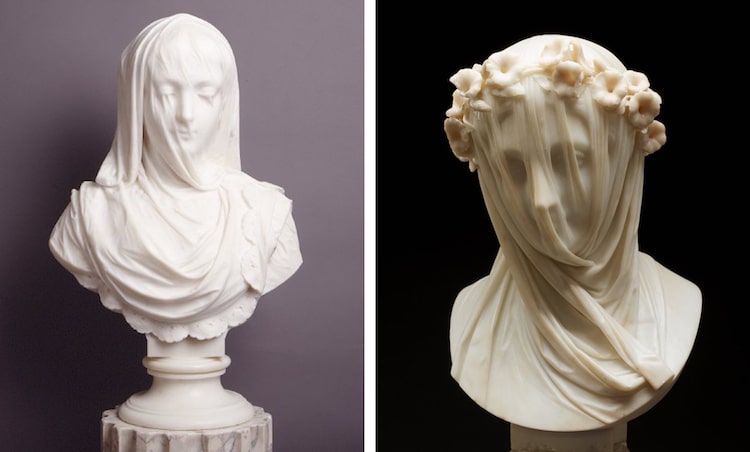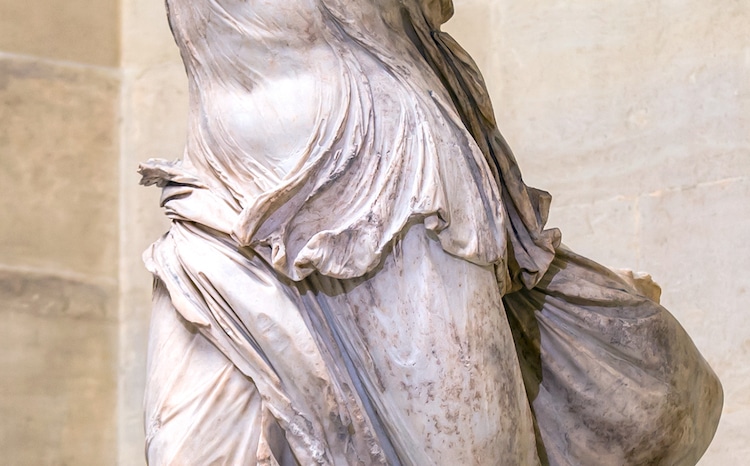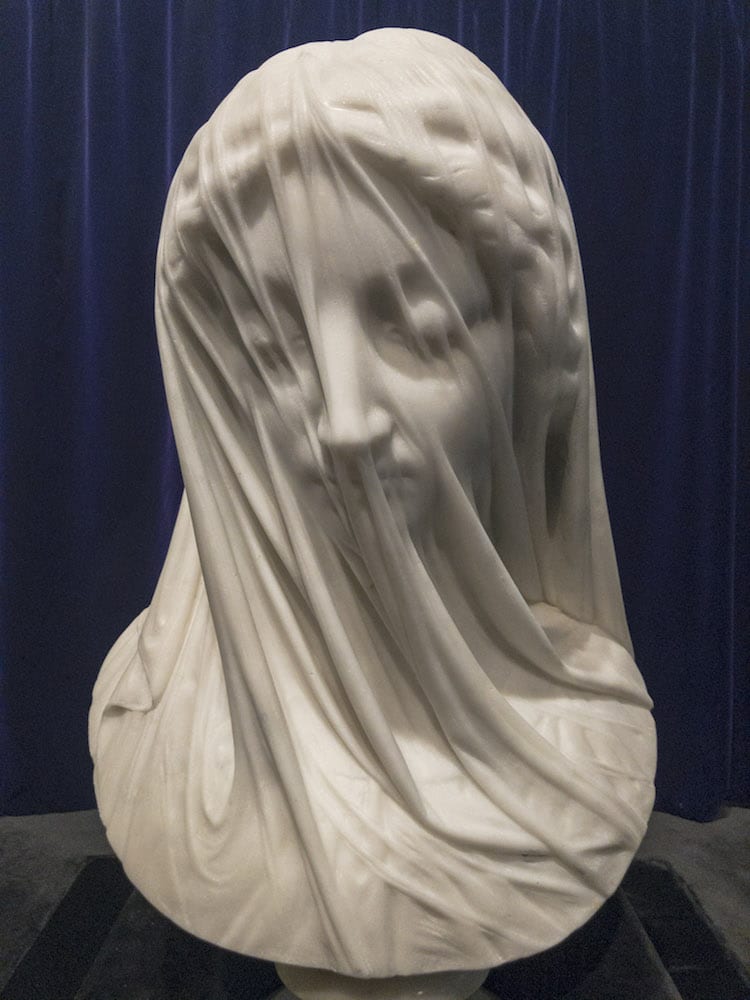For millennia, sculptors have worked in marble, a medium favored for its softness and translucence. These characteristics make the metamorphic rock particularly suited for pieces requiring intricate detail, including anatomical subtleties and flowing drapery. One sculpture that perfectly illustrates both of these instances is The Veiled Virgin, a 19th-century work by Italian sculptor Giovanni Strazza.
The Veiled Virgin
Little is know about the creation of The Veiled Virgin. Historians believe Strazza, who was from Milan, crafted the piece while working in Rome in the 1850s.The Veiled Virgin depicts the Virgin Mary with a veil draped over the contours of her realistically rendered features. With her eyes closed and her head tilted down, the figure appears to be either peacefully praying or expressing grief—both of which are historically characteristic of Virgin Mary portrayals.
The Veiled Virgin is made out of Carrara marble, a material derived from Tuscany and historically used by ancient Roman builders and Italian Renaissance artists.
The Veiled Virgin is made out of Carrara marble, a material derived from Tuscany and historically used by ancient Roman builders and Italian Renaissance artists.
This high-quality marble offered the perfect canvas for carving veils—a sculptural motif that was popular among Strazza and his peers. In particular, they were interested in sculpting busts and sculptures of women with faces shrouded in these see-through garments, with Veiled Lady sculptures by Pietro Rossi and Raffaelo Monti further illustrating this trend.

Left: Pietro Rossi, “Veiled Lady” 1882 (Photo: The Gibbes Museum of Art Public Domain)
Right: Raffaelo Monti. “Veiled Lady,” c. 1860 (Photo: Minneapolis Institute of Art Public Domain)
Right: Raffaelo Monti. “Veiled Lady,” c. 1860 (Photo: Minneapolis Institute of Art Public Domain)
The Veil in Sculpture
Why were veils popular among 19th-century Italian sculptors? One reason that these figures enjoyed this subject matter is because it allowed them to showcase their artistry.
Achieving the illusion that a solid material like stone is actually a flowing piece of fabric clinging to a body requires a great level of skill. Thus, since ancient times, sculptors have dressed their figures in drapery as a way to spotlight their sculptural prowess. Sculptures from Greece’s Hellenistic period and the Italian Renaissance serve as the most well-known examples of this phenomenon—and, undoubtedly, as inspiration for Strazza and his contemporaries.
“From an archaeological point of view, [the Veiled Virgin‘s veil] stems from the tradition of ‘wet drapery’ that already existed in Greco-Hellenistic sculpture,” Claire Barbillon, the director of the École du Louvre, explains. “Sculptors have always taken on this challenge.”

Detail of “The Winged Victory of Samothrace” (190 BCE) (Photo: Stock Photos from muratart/Shutterstock)
In addition to a Neo-classical interpretation of drapery, artists during this time also explored the veil motif in response to the Risorgimento, or the Italian unification. As the Italian people developed a renewed interest in arts and culture, the image of a veiled woman became an allegory for the united country. This symbol, the Newfoundland and Labrador Heritage Website explains, is comparable to how “Britannia symbolized England, Hibernia symbolized Ireland, and Lady Liberty symbolized the United States.”
Why did Strazza opt to combine a nationalistic symbol with Catholic iconography? While his own religious beliefs are not known, many propose it to be a work of devotion. It is also possible, however, that he was simply inspired by the religious sculptures created by Renaissance and Baroque masters before him.
The Veiled Virgin in Canada
While one may expect this sculpture to remain in Italy, it has called Canada home for over 150 years. In 1856, it was transported to St. John’s in Newfoundland, where it was received by Bishop John Thomas Mullock and placed in the Episcopal Palace next to St. John’s Basilica.
View with St. John’s Basilica
In his diary, Mullock praised his new acquisition: “Received safely from Rome, a beautiful statue of the Blessed Virgin Mary in marble, by Strazza,” he wrote. “The face is veiled, and the figure and features are all seen. It is a perfect gem of art.”
Its relocation was also enthusiastically documented by a local newspaper, The Newfoundlander. “To say that this representation surpasses in perfection of art, any piece of sculpture we have ever seen, conveys but weakly our impression of its exquisite beauty,” the article reads. “The possibility of such a triumph of the chisel had not before entered into our conception. Ordinary language must ever fail to do justice to a subject like this – to the rare artistic skill, and to the emotions it produces in the beholder.”
In 1862, it was moved to the nearby Presentation Convent, where it has remained—and captivated—ever since.
We’d like to personally thank Dr. J.E. FitzGerald for permission to cite freely from the information in his article written for the Newfoundland and Labrador Heritage website.
https://mymodernmet.com/the-veiled-virgin-sculpture/?fbclid=IwAR3e2kieSGgpfOvMt6OJTsxJBaTGf_JhjiWfM6Zj4GLZYiJVjQHPO420J1Q



No comments:
Post a Comment